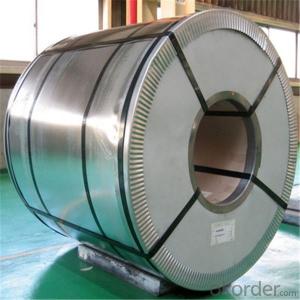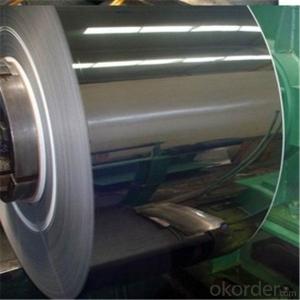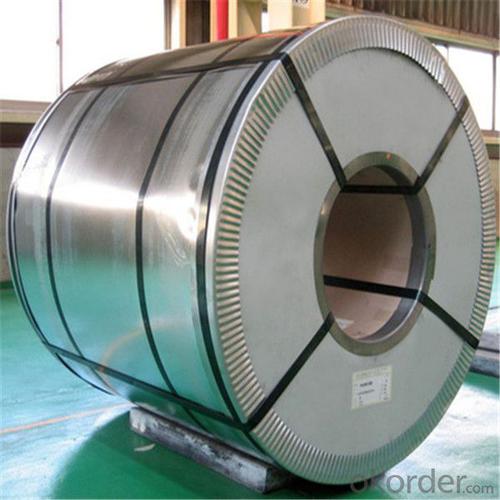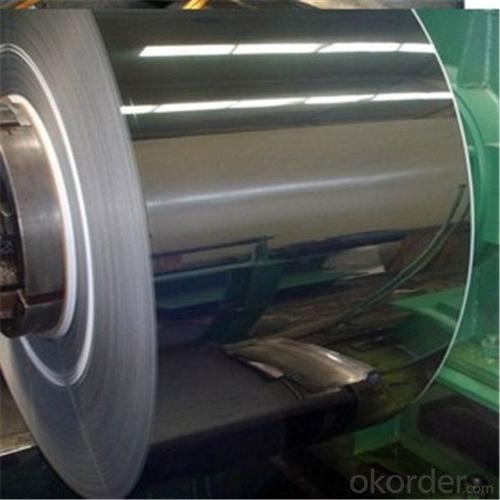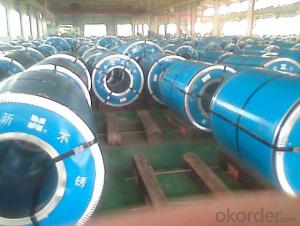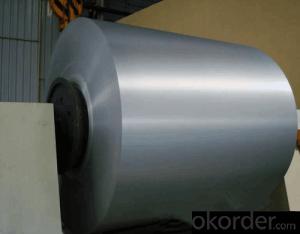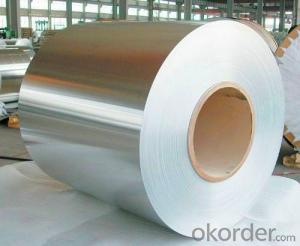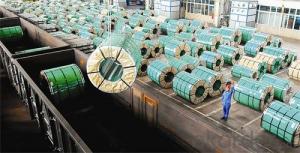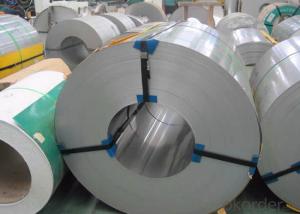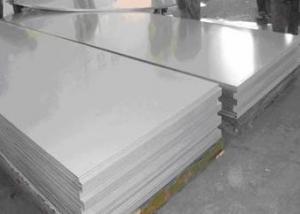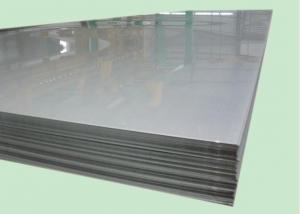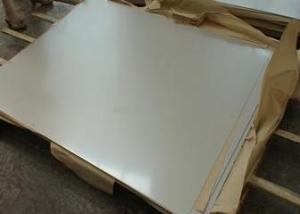AISI 304 Stainless Steel Coil for sink cold rolled
- Loading Port:
- Shanghai
- Payment Terms:
- TT OR LC
- Min Order Qty:
- 5 m.t.
- Supply Capability:
- 20000 m.t./month
OKorder Service Pledge
OKorder Financial Service
You Might Also Like
Specification
Products details of stainless steel coil
201 304 cold rolled stainless steel coils
Material:201,410,430,304,316,316L
Surface finish:2B,BA,No.4,6K,8K,HL,4K and so on
Thickness:0.15mm to 4.00mm
Width:15mm—3000mm
Weight:per actual weight
Application:kitchenware,cookware, metal decoration material, construction and building ornament, door, machine,building,ship plate,product parts manufacturing and stainless steel products tooling, steel spare and accessory parts,etc.
201 304 cold rolled stainless steel coils show:
Packaging & Shipping
Packing and shipping information of stainless steel coil
201 304 cold rolled stainless steel coils
Payment: T/T 30% deposit, Balance against the copy of B/L; or L/C at sight
Package: Export standard Package(Water Proof Paper/ PVC Cover+Wooden Pallet)
Shipment: 15 to 30 days after the receipt of the deposit
Ship term: FOB Huangpu / Foshan port or CNF import port
Minimum quantity: 5 Metric Ton
201 304 cold rolled stainless steel coils
Product/service(we sell): Cold Rolled Steel Coil/strip/sheet/circle/tube/pipe,and etc.
Main market: Taiwan, South-East Asia, Mid-East, India , Russian, South America, and etc.
3) Product picture display:
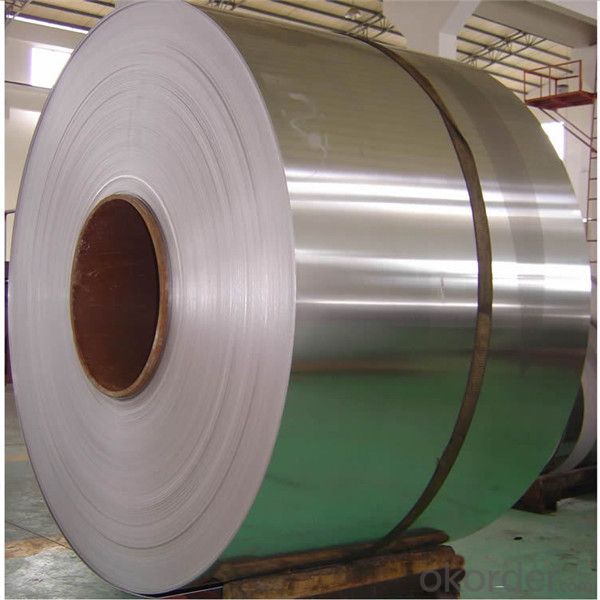
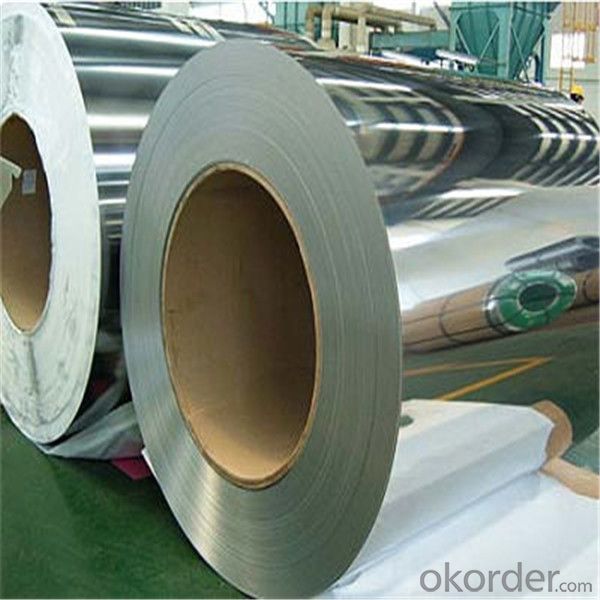
- Q: Can stainless steel strips be coated or painted?
- Yes, stainless steel strips can be coated or painted. Coating or painting stainless steel strips can provide a protective layer to prevent corrosion, enhance the appearance, or achieve a specific color or finish. There are various methods for coating or painting stainless steel, including powder coating, electroplating, and liquid paint. However, it is important to note that the surface of stainless steel must be properly prepared and cleaned before applying any coating or paint to ensure adhesion and long-term durability.
- Q: Can stainless steel strips be used for outdoor applications?
- Indeed, outdoor applications can make use of stainless steel strips. Stainless steel possesses notable resistance to corrosion, rendering it exceptionally appropriate for outdoor utilization. It can endure exposure to diverse weather conditions, including rain, snow, and sunlight, without succumbing to rust or deterioration. Moreover, stainless steel is endowed with durability, strength, and an extended lifespan, thereby establishing it as an optimal material for outdoor applications. Whether employed in construction, architectural components, or for decorative intentions, stainless steel strips are capable of withstanding the harsh exterior surroundings and upholding their integrity and aesthetic appeal throughout time.
- Q: What are the recommended guidelines for machining 111 stainless steel strips?
- To ensure optimal results when machining 111 stainless steel strips, it is advised to adhere to certain guidelines. These guidelines include: 1. Cutting tools: Utilize cutting tools that are specifically designed for machining stainless steel. Suitable options include carbide or high-speed steel tools. It is important to ensure that the tools are sharp and in good condition. 2. Cutting speed: Maintain a moderate cutting speed to prevent excessive heat buildup. The recommended cutting speed for 111 stainless steel strips is generally between 80 and 100 surface feet per minute (SFPM). 3. Feed rate: Use a feed rate that allows for efficient material removal without causing excessive wear on the tool. A feed rate of 0.005 to 0.015 inches per revolution (IPR) is typically suitable for 111 stainless steel strips. 4. Coolant and lubrication: Apply a suitable coolant or lubricant during the machining process to reduce friction, heat, and tool wear. Depending on the machining conditions, water-soluble or oil-based coolant/lubricant can be utilized. 5. Tool geometry: Select the appropriate tool geometry, such as a positive rake angle, to minimize cutting forces and improve chip evacuation. This helps prevent work hardening and tool breakage. 6. Workholding: Ensure secure and rigid workholding to minimize vibrations and enhance surface finish. Clamps or vice grips that provide sufficient grip without distorting the strips should be used. 7. Chip control: Employ effective measures for chip control, such as chip breakers or chip evacuation systems, to prevent chip buildup and protect the tool and workpiece from damage. 8. Quality control: Regularly monitor the machining process to ensure dimensional accuracy, surface finish, and adherence to tolerances. Appropriate measuring tools, such as calipers or micrometers, should be used for quality control checks. 9. Safety precautions: When machining stainless steel, it is essential to follow safety guidelines and wear appropriate personal protective equipment (PPE). This includes safety glasses, gloves, and hearing protection. It is important to note that these guidelines are general recommendations. Depending on the specific machining conditions, adjustments may be required. Factors such as strip width and thickness, desired surface finish, and the specific machinery being used should be taken into consideration. Consulting the manufacturer's recommendations and performing test cuts can help optimize the machining process for 111 stainless steel strips.
- Q: Are stainless steel strips resistant to staining?
- Yes, stainless steel strips are highly resistant to staining due to their chromium content that forms a protective oxide layer on the surface, preventing rust and staining.
- Q: What are the different types of surface finishes for stainless steel strips?
- There are several different types of surface finishes that are commonly used for stainless steel strips. These finishes are applied to the surface of the stainless steel in order to improve its appearance, increase its corrosion resistance, and enhance its durability. 1. Mill Finish: This is the most basic type of surface finish, which is achieved by leaving the stainless steel strip in its original, as-produced state. It has a dull, non-reflective appearance and may have visible imperfections or marks from the manufacturing process. 2. No. 1 Finish: Also known as hot-rolled annealed and pickled (HRAP), this finish is achieved by annealing the stainless steel strip and then pickling it in acid. It has a smooth, reflective surface with a slightly matte appearance. No. 1 finish is commonly used in industrial applications where surface appearance is not a primary concern. 3. No. 2B Finish: This finish is achieved by cold-rolling the stainless steel strip and then annealing and pickling it. It has a smooth, reflective surface with a bright, semi-reflective appearance. No. 2B finish is commonly used in applications that require a good balance between appearance and corrosion resistance, such as kitchen appliances and architectural elements. 4. No. 4 Finish: Also known as brushed or satin finish, this finish is achieved by mechanically polishing the stainless steel strip with abrasive materials. It has a smooth, matte appearance with fine parallel lines, giving it a brushed texture. No. 4 finish is commonly used in decorative applications, such as furniture, elevator panels, and decorative trims. 5. No. 8 Finish: Also known as mirror finish, this finish is achieved by polishing the stainless steel strip to a highly reflective surface. It has a mirror-like appearance with excellent reflectivity. No. 8 finish is commonly used in architectural and decorative applications that require a high-end, polished look, such as signage, jewelry, and automotive trims. In addition to these main surface finishes, there are also other specialized finishes available for specific applications, such as embossed finishes, patterned finishes, and colored finishes. These finishes further enhance the aesthetic appeal and functionality of stainless steel strips in various industries.
- Q: Are stainless steel strips suitable for food processing applications?
- Yes, stainless steel strips are highly suitable for food processing applications. Stainless steel is a popular choice in the food industry due to its excellent corrosion resistance, durability, and hygiene. It is non-reactive with food, meaning it will not contaminate or alter the taste of the processed food. Stainless steel strips are also easy to clean, maintaining a high level of sanitation required in food processing environments. Moreover, stainless steel has high strength and can withstand extreme temperatures, making it ideal for various processes such as cutting, slicing, and packaging. Overall, stainless steel strips are a reliable and safe choice for food processing applications.
- Q: What are the recommended packaging methods for 111 stainless steel strips?
- The recommended packaging methods for 111 stainless steel strips may vary depending on the specific requirements and preferences of the customer or manufacturer. However, there are a few commonly used packaging methods that are generally recommended for stainless steel strips: 1. Wooden Crates: Stainless steel strips can be packed in wooden crates to provide stability and protection during transportation. The crates are typically lined with foam or other cushioning materials to prevent scratching or damage to the strips. 2. Cardboard Boxes: For smaller quantities or shorter distances, stainless steel strips can be packed in sturdy cardboard boxes. The boxes should be strong enough to withstand the weight and dimensions of the strips and may be lined with plastic or paper to protect against moisture. 3. Plastic Wrapping: Stainless steel strips can also be individually wrapped in plastic or shrink-wrapped to provide a barrier against moisture, dust, and other contaminants. This method is commonly used when the strips need to be stored or transported in bulk. 4. Metal Banding: To secure and bundle stainless steel strips, metal banding or strapping can be used. This method ensures that the strips remain tightly packed together during transit, minimizing the risk of damage or shifting. 5. Vacuum Sealing: In certain cases, stainless steel strips may require airtight packaging to protect against corrosion or oxidation. Vacuum sealing the strips in moisture-resistant bags or pouches can help create a protective barrier and extend the shelf life of the product. It is important to note that the recommended packaging method may also depend on the specific conditions of storage or transportation, such as temperature, humidity, and duration. It is advisable to consult with the manufacturer or supplier for their specific recommendations based on the characteristics of the stainless steel strips and the intended use.
- Q: How do stainless steel strips perform in high-pressure environments?
- Stainless steel strips perform exceptionally well in high-pressure environments due to their inherent strength, corrosion resistance, and durability. Their ability to withstand extreme pressures and temperatures makes them ideal for applications such as oil and gas pipelines, aerospace components, and hydraulic systems. Additionally, stainless steel's resistance to rust and oxidation ensures long-lasting performance, making it a reliable choice for high-pressure environments.
- Q: Can stainless steel strips be used in the production of jewelry clasps?
- Yes, stainless steel strips can be used in the production of jewelry clasps. Stainless steel is a durable and corrosion-resistant material, making it suitable for various applications, including jewelry making. Stainless steel strips can be shaped and formed into different designs for clasps, providing both functionality and aesthetics. Additionally, stainless steel's resistance to tarnish and fading ensures that the jewelry clasps will maintain their appearance over time. The versatility of stainless steel makes it a popular choice for jewelry designers and manufacturers.
- Q: How do stainless steel strips handle exposure to sulfuric acid?
- Stainless steel strips are known for their excellent corrosion resistance properties, making them suitable for a wide range of applications. When it comes to exposure to sulfuric acid, stainless steel strips generally handle it well, depending on the concentration and temperature of the acid. Stainless steel contains a high amount of chromium, which forms a protective layer on the surface when exposed to oxygen. This passive layer acts as a barrier against corrosive elements, including sulfuric acid. However, the effectiveness of this layer can be compromised under certain conditions. In dilute sulfuric acid solutions, stainless steel strips display good resistance. The passive layer remains intact, protecting the steel from corrosion. However, at higher concentrations or elevated temperatures, the passive layer may become susceptible to attack. In such cases, stainless steel grades with higher chromium and nickel content, such as 316 or 317, are recommended. These alloys offer improved resistance to sulfuric acid, even at higher concentrations and temperatures. Additionally, adding molybdenum to the stainless steel composition can further enhance its resistance to sulfuric acid. It is important to note that prolonged exposure to sulfuric acid can eventually lead to corrosion, even in the most resistant stainless steel grades. Therefore, regular inspections and maintenance are crucial to ensure the longevity of stainless steel strips in sulfuric acid environments. In summary, stainless steel strips generally handle exposure to sulfuric acid well, particularly in dilute solutions. However, for higher concentrations and temperatures, selecting the appropriate stainless steel grade with higher chromium, nickel, and possibly molybdenum content is recommended to ensure optimum corrosion resistance.
Send your message to us
AISI 304 Stainless Steel Coil for sink cold rolled
- Loading Port:
- Shanghai
- Payment Terms:
- TT OR LC
- Min Order Qty:
- 5 m.t.
- Supply Capability:
- 20000 m.t./month
OKorder Service Pledge
OKorder Financial Service
Similar products
Hot products
Hot Searches
Related keywords
